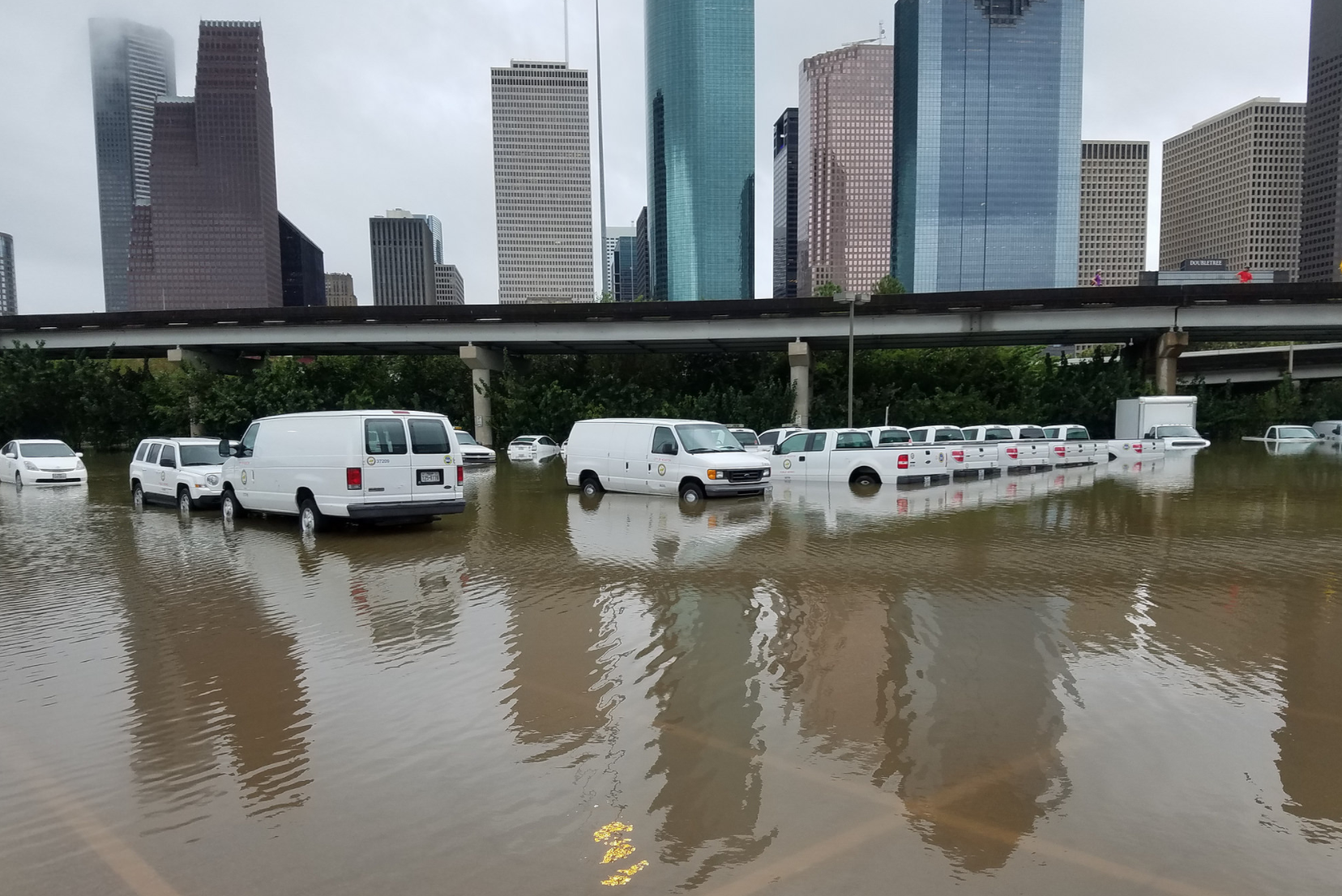She was speaking with a panel of experts on flooding in Houston as part of the Texas Tribune Festival, echoing the thoughts of many across the Houston area right now. With estimates of damages "somewhere north of $50 billion" for the city alone, according to Houston's chief resilience officer Stephen Costello, full recovery is a long way off. The "next one," however, may not be so distant and many say whether Houston will be better prepared depends, in part, on political will.
"It’s the new normal now," said Garcia, of flooding.
There are echoes of other storms in these conversations. Of Allison. Of Ike.
"We thought after Allison there would be lots of changes," said Phil Bedient, director of the Severe Storm Prediction, Education, and Evacuation from Disasters center at Rice University, in a separate interview. "All they did; they spent a lot of money and remapped floodplains but the changes were not really forthcoming."
But Harvey is already proving to be different. Aside from record-setting rainfall totals in some areas, Bedient said, "I honestly truly think this time it's starting to impact especially first-timers and multimillion dollar houses," adding, "I've never seen so many lawsuits flying around."
Indeed, a Kinder Institute for Urban Research analysis of estimates of expected flooding from the Federal Emergency Management Agency revealed that, while households earning less than $50,000 annually and Hispanic residents made up the bulk of those likely affected, it was actually white and upper class households that were likely disproportionately impacted compared to their overall numbers in the city.
Already, there's talk of buyouts. Tuesday, Harris County Commissioners Court approved $20 million to buyout 200 homes across the county.
But many are pushing for more. "Obviously the goal isn’t that the worst-case storm hits Houston and everything keeps operating just like normal through the storm," said Christof Spieler, an urban planner and board member with the county's Metropolitan Transit Authority, in a phone interview. "But it's this decision of what level of damage do we accept?"
While the mayor pushes the governor to tap its Rainy Day Fund and holds hearings about a temporary tax hike to pay for the recovery, Costello said he expects additional funding from the federal government, including from the Department of Housing and Urban Development's disaster relief block grants.
Several experts have been pushing for improvements even before Harvey. "It doesn’t surprise me," said Bedient. "Houston should know better. It’s a city of great space accomplishments, medical breakthroughs, their transportation system is really pretty good but the flood control, the flood warning, the flood management is in disarray."
In addition to better flood warning systems, Bedient said he wants a regional flood authority, an additional reservoir, more green space and other changes.
"Even though we have this new norm," he said, "we can plan and build around this. You just have to add in more storage and more green space, that’s the only solution. There is no shortcut."
Steps like channelizing bayous haven't been enough, said Mary Anne Piacentini, executive director of the Katy Prairie Conservancy. "I think that a lot of the things that we’ve already done," she said, "aren’t working anymore with these huge flood events." Instead, she recommended the city and county, "use nature at its best."
Part of the story told in the weeks after Harvey was of the region's disappearing wetlands. Between 1996 and 2011, said Piacentini, Houston lost 30 percent of its wetlands. "Nobody does nature as well as nature does it," she said. And even with requirements that new development offset any loss of wetlands, added Piacentini, "a lot of people who are charged with mitigating for the loss of wetlands actually don’t follow through."
Others have pushed for the Ike Dike or Coastal Spine, a barrier that would protect against storm surge. "That's a wall I can support," joked Garcia.
But Costello took a slightly different approach. "What I have cautioned the community," he said, "is to not react so quickly...step back, take a deep breath, let's see what really happened to the community and figure out where we go forward."
One of the impacts still being monitored is Harvey's environmental toll. "What about solid waste? What about hazardous waste? What about all the petrochemical waste," asked University of Houston environmental engineering professor Hanadi Rifai. While there were coordinated rescue and rehousing responses, Rifai said, "I'm not sure we did as good a job responding to environmental problems."
Researchers with the University of Houston, as well as the Kinder Institute, have teamed with the city to investigate high levels of E. coli, among other hazards. And neighborhoods around the Port, in particular, have struggled to get answers from the Environmental Protection Agency. These are areas facing environmental hazards throughout the year, not just during flood events. And the much-discussed barrier that would protect the Port from a surge does not prevent the sort of exposures that occurred during Harvey, where some of the roughly 5,000 storage tanks flooded. "Those will happen whether you have storm surge," or not, she said.
For a place that has made a name as a fast-growth, affordable city, Houston will likely face a new reality after Harvey. "As a result of this severe flooding we've had in the last few years," said Costello, "development will probably slow down."
But the city itself will also have to reckon with a long-building reality.
"We shouldn’t look at the sort of amazing outpouring of support that happened immediately after and say, great that’s all taken care of," said Spieler. "The much harder thing is to do the long-lasting stuff."

